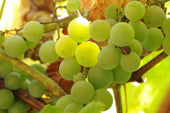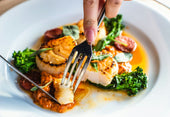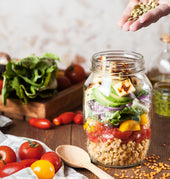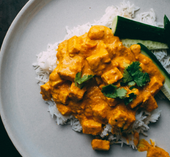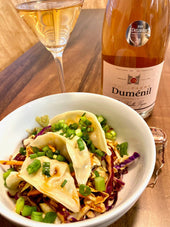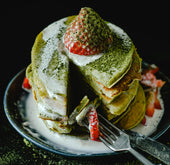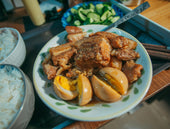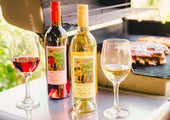
Land of Sea and Fog: The Santa Cruz Mountains Wine Growing Region
 Photo Credit: Clos de la Tech
Photo Credit: Clos de la Tech
The Santa Cruz Mountains AVA is perched atop the Peninsula Ridge overlooking the land of Google, Facebook, Apple and venture capitalists known as Silicon Valley. To the west, its steep slopes fall away to some of the most rugged portions of the San Mateo county coastline. The region stretches to the south above coastal surf towns on the coast and peeks over at inland ag towns in the Santa Clara Valley. In short, it’s enormous. With a total size of 322,000 acres, it is the largest California AVA.
The AVA was established at the same time as other world renown AVAs such as Napa and Sonoma Valleys, and wines from the region participated in the now-legendary Judgment of Paris tasting arranged by Stephen Spurrier in 1979. Why, then, has the Santa Cruz AVA never experienced the fame and notoriety of other California winemaking regions?
A combination of topography, meteorology, geology and gigantic coastal redwoods have conspired to create wonderful vineyards widely separated from one another connected by twisting roads with spotty cell phone service. Becoming intimate with the vineyards and wineries is more akin to a quest than a leisurely get-away. But, it’s worth the effort.
A Foggy Wonderland
Santa Cruz was the first AVA in the US to use climate and topography to describe it rather than political boundaries. It is defined by elevation, wind and fog. Heated inland valley air rises to draw the moist and cool pacific air on shore resulting in a thick layer of fog that wraps entirely around the base of the peninsula. This band of dense moist air ebbs up the slopes and flows around the mountain tops to spill onto the eastern side, while the rugged peaks remain above the fog. As a result, there are a number of microclimates.
It is one of the coolest growing regions in the US. The wide variation in daytime temperatures and cooling ocean breezes slows down the ripening process to produce wines with higher acidity that age well. The western areas are especially suited to Pinot Noir and Chardonnay, while mountain top and eastern valley vineyards appeal to heat-loving varietals such as Cabernet Sauvignon, Merlot, Syrah and Zinfandel.
 Image: Santa Cruz Mountains Wine Association and Patty Lyn Tweten
Image: Santa Cruz Mountains Wine Association and Patty Lyn Tweten
Shaky Grounds
The Santa Cruz mountains owe their origination to a jink in the San Andreas Fault causing uplift. Loma Prieta, the highest peak in the region, was the epicenter of San Francisco’s 1989 earthquake. The mountainous area is constantly eroding as a result of geological upheaval and torrential winter rains rolling off the Pacific. Soil makeup is variable, generally thin, poor and free-draining, resulting in lower yields and higher fruit intensity.
Among California’s First Growing Regions
Vineyards have existed in the Santa Cruz Mountains since the late 1880s when Paul Masson planted the first vineyards of Pinot Noir and Chardonnay in Saratoga. He created a thriving sparkling wine business, but prohibition interfered and he sold the property to a stockbroker-cum-vintner named Martin Ray. Ray eventually established a new estate with cuttings from Masson’s original vineyards. He was a man before his time and believed that America could produce wines that could compete with Europe. Passionate about quality, he rigorously stressed his vines for low yield and rushed to crush his grapes after harvest — steps that are now de rigueur but at the time were considered unnecessary, if not eccentric. Sadly, his creditors found him eccentric as well and he lost his estate. That estate, now Mount Eden Vineyards, went through rejuvenation in the late 1980’s and 1990s. In the last two decades, Mount Eden has established itself as a world class producer of estate-grown Chardonnay, Pinot Noir and Cabernet. (Plume Ridge Bottle Shop carries the award-winning 2015 Mount Eden Vineyards Santa Cruz Estate Cabernet Sauvignon. The vines trace their origins back to Paul Masson’s original Chateaux Margaux cuttings from Bordeaux.)
Another pioneer of the Santa Cruz region was Osea Perrone who established a vineyard near the top of Monte Bello Ridge overlooking what is now Cupertino. He built a winery and dug a cellar out of the native limestone that is still in use today by Ridge Vineyards. Ridge’s Monte Bello 1971 Cabernet is enshrined in US history as one of the American wines that pummeled its Bordeaux brethren in the Judgement of Paris blind tasting of 1979. (You can purchase a descendent of this historic wine through Plume Ridge Bottle Shop, the 2019 Ridge Estate Santa Cruz Mountains Cabernet Sauvignon.)
Authentic and “Old School”
Although rich with history and a stone's throw from Silicon Valley, the Santa Cruz Mountain wineries have resisted modern wine touring trends and maintained their rugged independence. Because of the microclimates and intimidating terrain, California’s largest AVA has only 75 wineries with 1,600 acres under cultivation—compared to Napa Valley’s 400+ vineyards on 40,000 acres. Yet, out of that cluster of wineries has emerged many fine wines and some of California’s best known wine-industry luminaries. Winemakers such as Paul Masson, Martin Ray, Randall Graham, the Bonny Doon “Rhone Ranger” and Paul Draper of Ridge Vineyards, made their names in this region. The close knit group of winegrowers and vintners welcome visitors, yet eschew the trappings of more popular wine tasting regions. For anyone who appreciates exquisite wines that will age beautifully, visiting the region is like a trip to the land that time forgot.
 Patty Lyn Tweten is a writer, graphic designer and Pinot Noir vineyard owner. Working exclusively in the wine industry, her writing inspiration comes from visual design work and her own front yard. Website Facebook Instagram Linkedin
Patty Lyn Tweten is a writer, graphic designer and Pinot Noir vineyard owner. Working exclusively in the wine industry, her writing inspiration comes from visual design work and her own front yard. Website Facebook Instagram Linkedin







